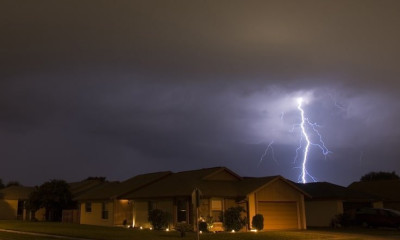Understanding Coinsurance Clauses in Your Commercial Property Insurance Policy – The Good, the Bad and the Ugly
Did you know that many commercial insurance policies include provisions for coinsurance on their Building and Business Personal Property coverages? Coinsurance is a property insurance provision that imposes a penalty on an insured’s loss recovery if the limit of insurance purchased is not at least equal to a specified percentage of the value of the insured building or business personal property. In other words, coinsurance penalties are triggered when a policyholder has not purchased enough insurance to cover a required amount of the value of their insured property.
For most businesses, this means that if adequate coverage is not purchased for the company’s buildings and the business personal property, they will be subjected to a coinsurance penalty should an insured loss occur at the property. As a licensed public adjuster, Adjusters International/Basloe, Levin & Cuccaro’s Steven Vanuga has assisted many owners and managers in New York, Pennsylvania and New England with their commercial insurance claims. We spoke to Vanuga to find out what business owners need to know about this complicated insurance product.
The Good
How can coinsurance be helpful? Vanuga states that the benefit of coinsurance is the ability to lower the cost of a company’s property insurance policy premium based on the amount of risk that the owners want to absorb if a loss occurs. In other words, the lower the coinsurance percentage, the lower the policy’s price.
“Coinsurance provisions allow companies with smaller budgets to make the choice of paying less by purchasing less coverage. For some business owners, the risk of not being fully covered if their buildings, warehouses or other facilities are damaged by extreme weather or fire is worth the cost savings that they’ll gain up front. Without this option, they may not be able to afford insurance at all and that could keep the business from getting off the ground in the first place,” said Vanuga.
Insurance brokers and agents that sell commercial insurance should be fully aware of the penalties their clients may face if the values are not correct. Lower (incorrect) values may occur but it is ultimately the policyholder’s responsibility to make sure that the coverage is correct.
“They need to work with a broker or agent and their insurance carrier to ensure that this coinsurance coverage is a positive element of their policy and not a potentially damaging financial one,” said Vanuga.
The Bad
What is the biggest misconception about coinsurance among business owners? Vanuga has worked with many policyholders who, when they first purchased their policies, were not educated as to what coinsurance is and how it should be used. If the amount of coverage purchased is less than the required amount, then the policyholder will be penalized with a coinsurance penalty or reduction in collectible loss.
“It’s not surprising that many policyholders commonly misunderstand the role that coinsurance plays in their policies as many are never even aware that their policy includes this clause. This is why it’s so important to read your insurance policy from start to finish and to ask for a full explanation as to how your business will be reimbursed in the event of a loss before purchasing or renewing the policy,” said Vanuga.
He notes that coverage limits, including coinsurance percentages, are typically listed on the commercial policy’s declarations page which should show all limit amounts and any applicable deductibles for both the business’ buildings and the business personal property.
The Ugly
How can coinsurance cause problems for policyholders? Vanuga states that when a business covered by a commercial policy with a coinsurance clause suffers a significant partial loss to their property, this often causes complications. Why? If they don’t have the correct amount of coverage as compared to their coinsurance percentage selection (which could be anywhere from 50% to the more common 80%, 90% or 100%), then they will face a financial penalty that will reduce the insurance settlement amount.
Here’s a simple example using a $500,000 partial building loss. The business purchased a policy with a 100% coinsurance provision. They should insure their building at $2,000,000, but only purchased coverage of $1,000,000. Based on the principles of coinsurance, they are now facing a 50% coinsurance penalty on the loss, as the calculation displays below:
$500,000 loss - $5,000 deductible x ($1,000,000 purchased coverage/$2,000,000 required coverage) = $247,500 loss paid
Had the business owner purchased the correct coverage amount of $2,000,000 (the 100% coinsurance amount required), then the claim amount paid would have been $495,000 (subtracting the $5,000 policy deductible). Instead, they are now facing a loss that will only have $245,000 of coverage. The remaining $255,000 loss amount will now have to be paid directly by the business, out of pocket. Not good!
Important Note: It is possible for some policies to apply the deductible after the coinsurance penalty is applied.
“Business owners can face steep penalties based on the percentage of coverage that they should have purchased compared to the amount that they did purchase. The only way to overcome these penalties is to ensure that the value of a business’ buildings and business personal property are correctly valued by utilizing the insurance carrier’s loss control staff. You should insist that these carrier employees inspect and value the property, and that you and the carrier agree upon those stated values when the policy is issued or renewed. Once a loss occurs that involves a coinsurance provision, hiring a public adjuster as your advocate may avoid or lessen the effect of a possible coinsurance penalty. Public adjusters can make a huge difference in the settlement process,” said Vanuga.
Additional Resources:
- Adjusting Today "Coinsurance/Insurance to Value Revisited: An Essential Concept in Property Insurance"
- Insights for Your Industry "Coinsurance - What Is It and Why Is It Important?"
- Podcast "Coinsurance: Assisting policyholders with understand coinsurance penalties, clauses and calculations"
For more information on how Adjusters International/Basloe, Levin & Cuccaro’s public adjusters can help your business to recover from severe property damage, call 877-482-1234.













